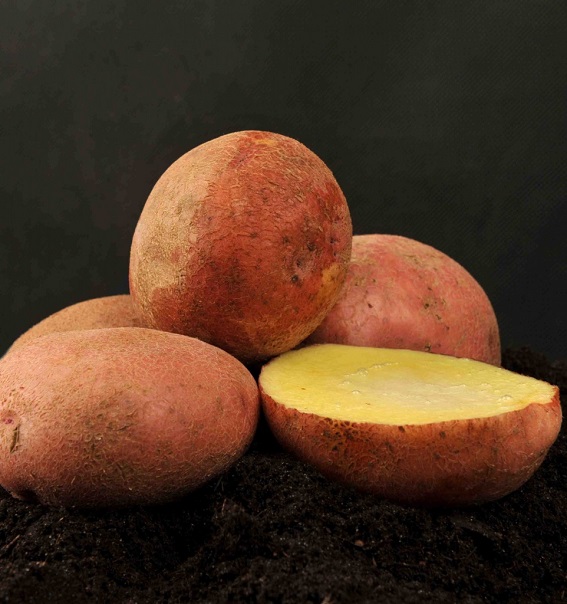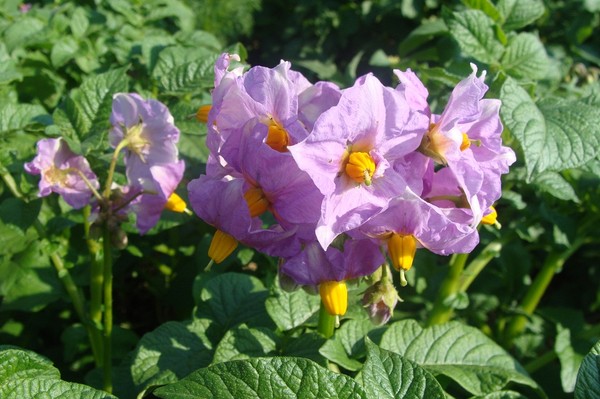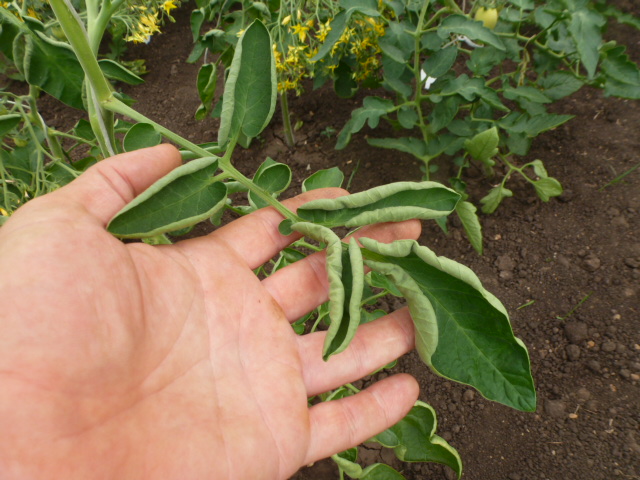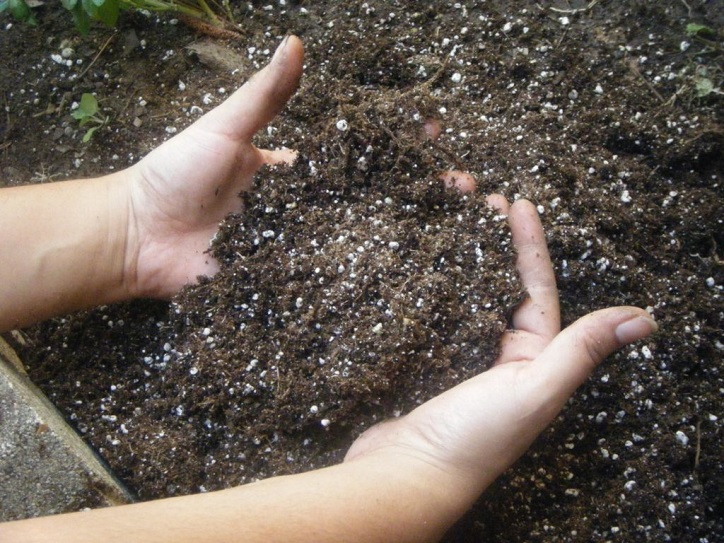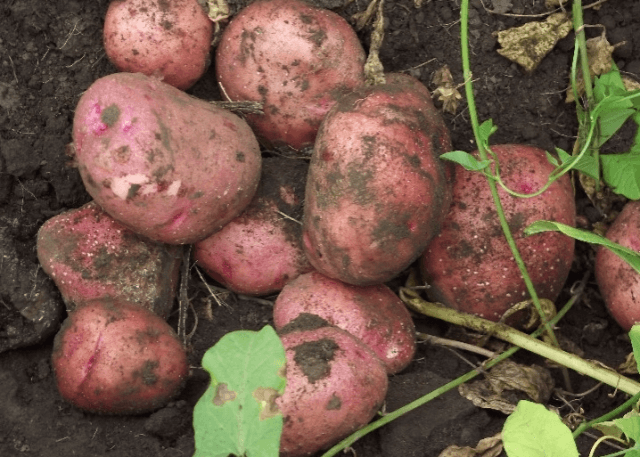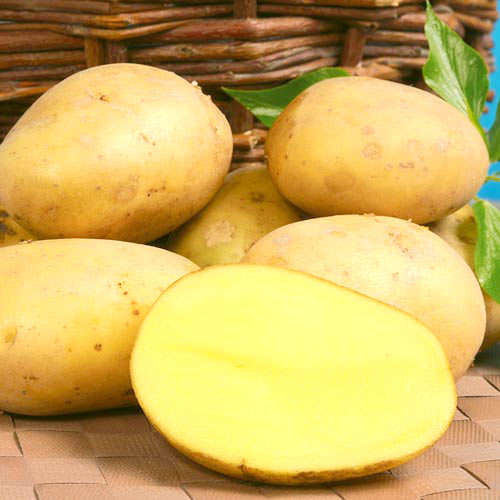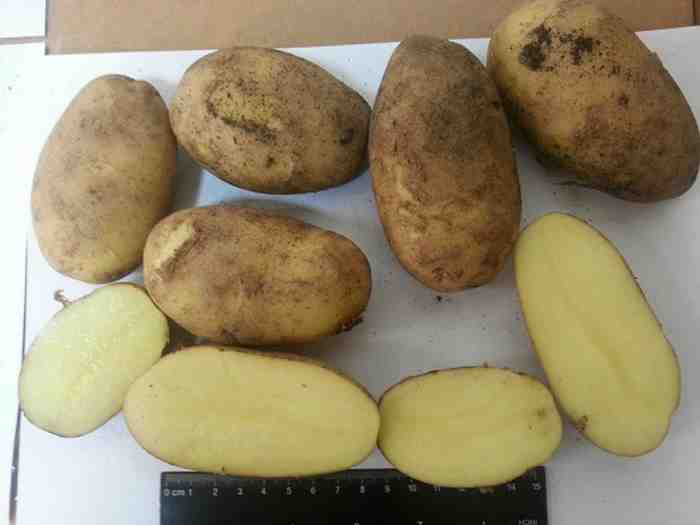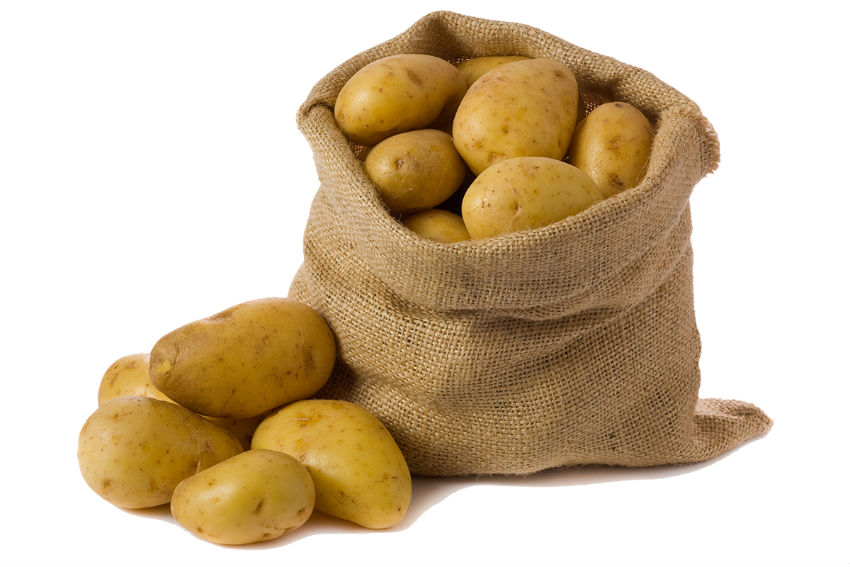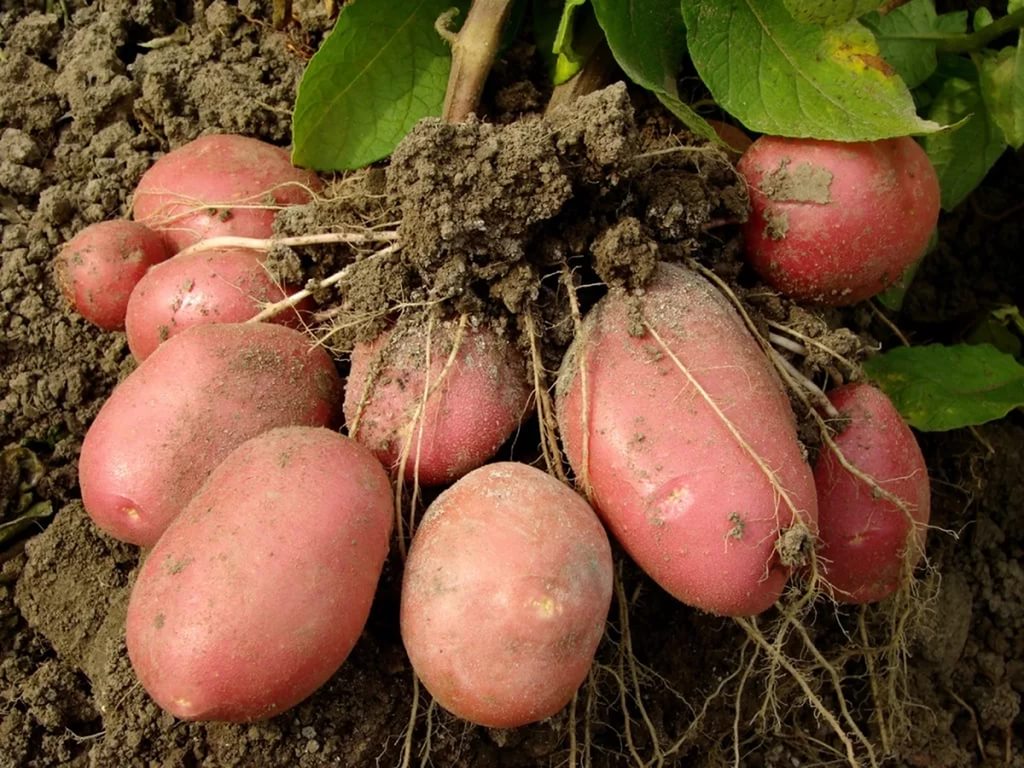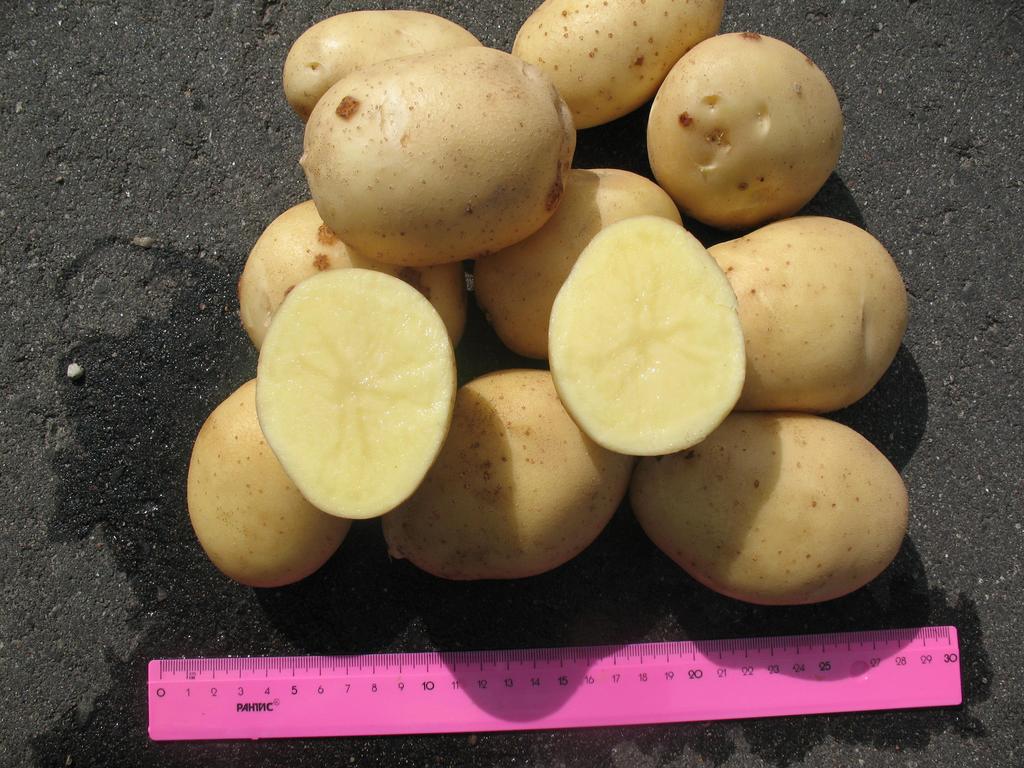Content:
Zhuravinka potatoes are the pride of the Belarusian selection. The plant fully justified the time spent on hatching, because in many respects it is not inferior to the developments of famous Dutch specialists.
History of origin
Officially, the appearance of the variety dates back to 2005, because it was then that it was entered into the State Register of Cultures of Russia. The creation of Zhuravinka was carried out by Belarusian breeders from the Scientific and Production Center of the National Academy of Sciences (until now they remain the sole owners of the patent) and Russian farmers from the Niva farm. Initially, the potatoes were to be planted in the Central North-West and Volga-Vyatka regions of Belarus. However, due to its special nutritional value, potatoes have become widespread in all CIS countries and even Europe.
Characteristics of the variety
Frost resistance
Ten-year observations of this varietal crop make it clear that it is frost-resistant - capable of withstanding up to -7 degrees of frost. Zhuravinka tolerates heat just as well - the plant will not wither if the air warms up to + 38ºC. Leaves in such a climate do not wither much, the stems do not bend.
Yield
The mid-late version is called Zhuravinka. This variety of potatoes allows you to dig up ripe fruits in about 90-110 days from the moment of planting. A rich harvest is one of the main advantages of the variety. The owners can harvest about 450-600 centners of fruits from just one planted hectare. More careful plant care can provide even 700 quintals.
Important! Potatoes from one Zhuravinka bush (the characteristics of the variety indicate this) give about 14-20 tubers of medium and large size.
Marketability of root crops is at least 82-96%.
Bloom
The first flowers of the potato bush release at the end of June. The inflorescences consist of small flowers. One such can have 4-5 pieces. The petals are purple or violet-red. Berries on bushes are very rare.
Plant parameters
The ground part of the plant is relatively low, up to 50 cm tall. Shoots are mostly even, stretching upward, sometimes tilting slightly from the center to the sides. The diameter of each stem ranges from 0.5-1 cm. The leaves themselves are dark green in color with a darker main vein. The leaves are quite dense to the touch, have a rounded shape and noticeably wavy edges. From the ground, shoots actually break through on the 20-25th day. The stems grow quickly but evenly.
The Zhuravushka potato can be round or oval in shape, the characteristic of the variety indicates a possible variety of appearance: the fruit can be embossed or completely smooth, with a peculiar mesh. Other features of tubers include:
- rich red peel;
- deep yellow pulp;
- the eyes are distributed evenly over the surface of the vegetable, and they themselves are small in size;
- the average weight of one potato varies in the range of 90-120 grams;
- after cutting the peel, the potatoes do not darken from exposure to air;
- the taste parameter is estimated quite high: a wide variety of baked, boiled or fried dishes can be prepared from potatoes of the variety; sufficient firmness of the fruit allows it to be used for cooking potato chips;
- the softness of the potato is easy to boil;
- is one of the leaders in starch content - up to 16-20%.
Diseases
Variety Zhuravinka - resistant to viruses X, C, M, as well as to scab, prototype cancer, potato nematode, "black leg".
The cultivar turned out to be sensitive to late blight. This common plant disease occurs due to the negative effects of simple microorganisms. More often in case of high humidity. Potato tops are affected and suffer from the disease to the greatest extent, less often the root system is damaged.
Breeders indicate average resistance to viruses of type Y, L and rhizoctonia. These diseases can be recognized by yellow leaves, deformed stems, rotting of potato roots.
Colorado beetles remain the most dangerous pests for Zhuravinka, as well as for many other potato varieties. They lay their larvae in large quantities on the leaves of the plant. Planting can also be destroyed: bears, cicadas, aphids, butterfly scoops, potato moths, wireworms.
Growing features
How to plant
Potatoes Zhuravushka must be planted in a strictly defined period by breeders and agronomists:
- in the southern regions - from 10 to 30 April;
- in the north - no earlier than May 15;
- in the central ones - late April - early May.
You need to choose the area very carefully, because the plant does not tolerate soil with a high content of nitrogen fertilizing. The best option for this variety would be soil with small and medium-sized granules (up to 2-2.5 cm). The plant does not perceive both excess moisture and its serious lack. In the first case, the owner may notice late blight on the stems, in the second (drought) - leaf fall. You can only count on the highest yield if the entire planting area is on the sunny side.
Experienced farmers recommend an optimum soil acidity of 5.1-6.0 ph. Too acidic or alkaline media will not give the expected harvest results.
Important! To get the desired quality of the vegetable, you should not plant it in too close rows. The distance between individual bushes in a row should not be less than 25-30 cm. The distance between rows is 60-70 cm.
Preparation for planting potatoes consists of 3 stages:
- Germination;
- Landscaping;
- Treatments with "Zirconium" or "Carvitol".
The planting depth directly depends on what kind of soil is on the ground: if sand prevails - to a depth of 10 cm, if clay - 7-8 cm.
Care
During the entire growing season (approximately 15-25 days), you need to monitor the moisture and looseness of the soil.
The first hilling should be carried out when the potato tops reach a height of 15-22 cm. If there is little precipitation at this time, it is better to replace this agrotechnical process with the usual loosening.
The very same hilling can be carried out at a time when the earth is sufficiently wet. This reduces the likelihood of a hard crust on the soil surface. Such an event is performed in order to stimulate the formation of stolons and adventitious roots, which, in turn, affects the yield. The load on the culture will be less if such work is done not manually, but with the help of an electric plow.
Important! Hilling in the northern regions for a good harvest should be carried out about 5-7 times per season. In the southern regions, one is enough, sometimes 2.
Before the plant blooms, it needs to be watered several times - this contributes to faster growth.
For good protection of potatoes from insecticides during the flowering of Zhuravinka, the owners spray them with such preparations as "Akarin", "Bitoxibatsilin", "Agravertin".
It is better to carry out this procedure in the morning (until 10:00) or already in the evening (5-7 hours). Thus, the dew will not wash away the product, and the sun's rays will not melt. Over-spraying is not recommended.
Alternative options for feeding a plant include:
- bird droppings (such a natural material is rich in potassium, phosphorus and nitrogen);
- silt from a river or lake.
In excessively wet summers, you can use fungicides, including Fundazol.
Potato storage works well. For better preservation of fruits in winter, it is recommended to pre-dry them in the fresh air at a temperature of 18-20 degrees Celsius.
In terms of keeping quality, Zhuravinka is one of the leaders. Just as in the case of the Timo variety, keeping quality is 96%.
Advantages and disadvantages
The description of the Zhuravinka potato makes it clear that this plant has a number of positive qualities, in particular the following:
- High productivity;
- The ability to resist bacteria and a variety of diseases;
- Long storage period;
- Excellent marketable (appetizing) appearance;
- Unpretentious care;
- On a five-point scale, the taste properties of Zhuravinka are rated by tasters at 4.7 points. Softness does not change color after cleaning, heat treatment, contact with water or air. Does not lose its shape;
- Due to its high starch content, it can be used to prepare potato chips, as well as starch;
- Resistant to many potato viruses as well as potato cancer;
- Insensitive to temperature changes, can withstand both very hot and frosty weather;
- It has a developed root system, so the number of fruits gives a lot.
As for the “other side” of the medal, there are some nuances here. This varietal potato has several disadvantages:
- Vulnerability to nitrogen-rich soil. This “minus” can be easily dealt with: farmers just need to adhere to the basic recommendations of breeders;
- Tendency to late blight. The plant is very sensitive to it;
- Needs optimal (average) soil moisture, otherwise the yield is significantly reduced.
You can buy Zhuravinka relatively inexpensively (with Scarlet, for example). As of May 2018 (the period of old potatoes, fruits for planting), its price was 10-13 rubles per kilogram. The thick skin of the vegetable ensures easy transportation - mechanical damage does not cause spoilage of the potato.
Together with Preser, Timo, Ariel, Romano Zhuravinka is included in the list of the most popular and favorite varieties among modern farmers.
